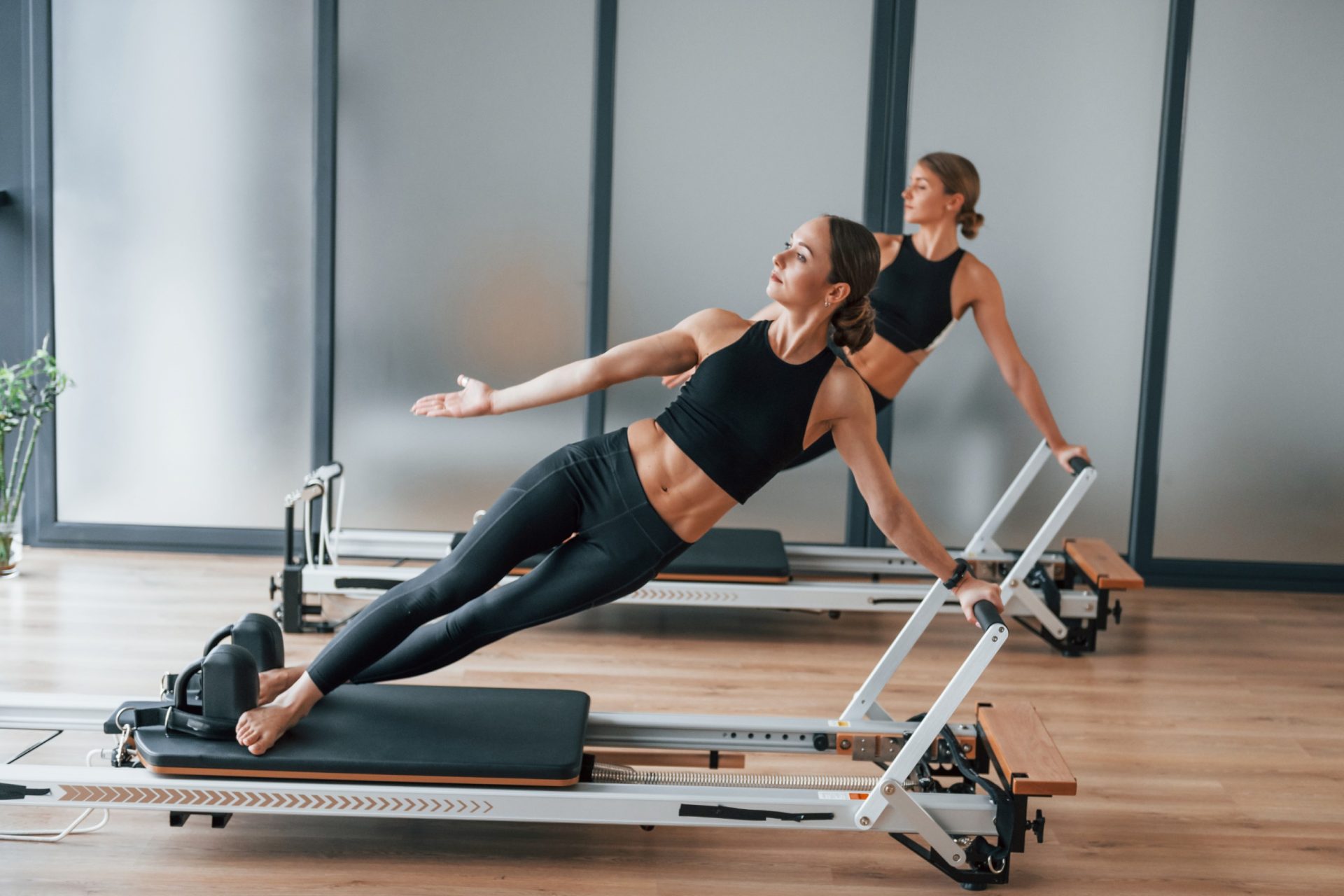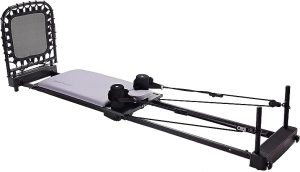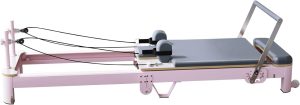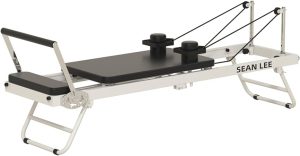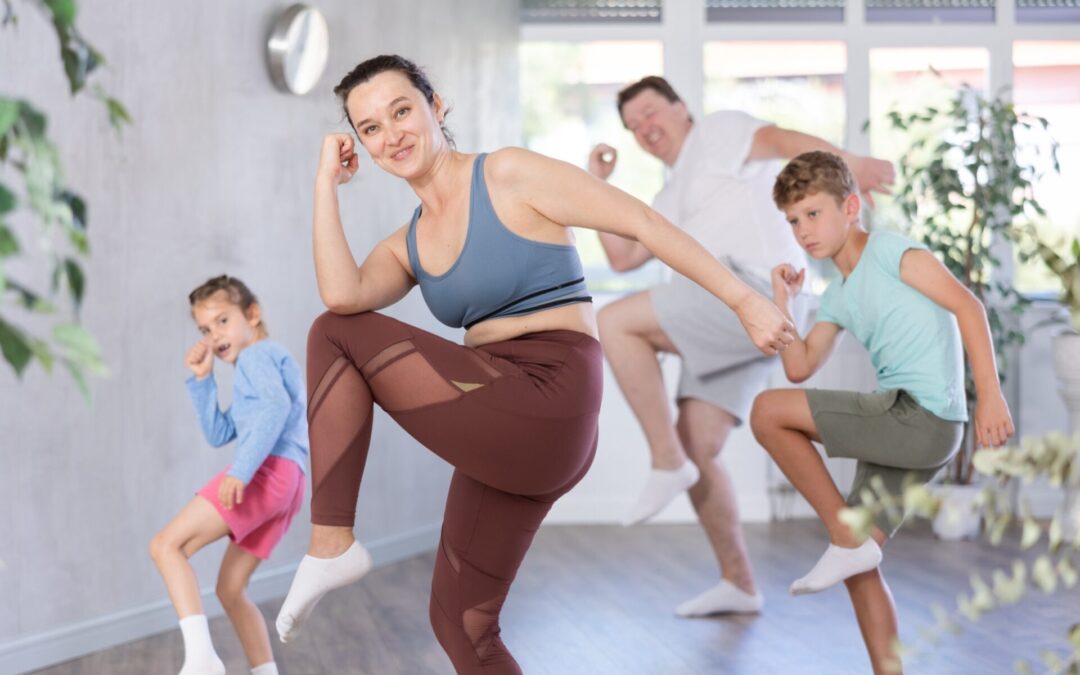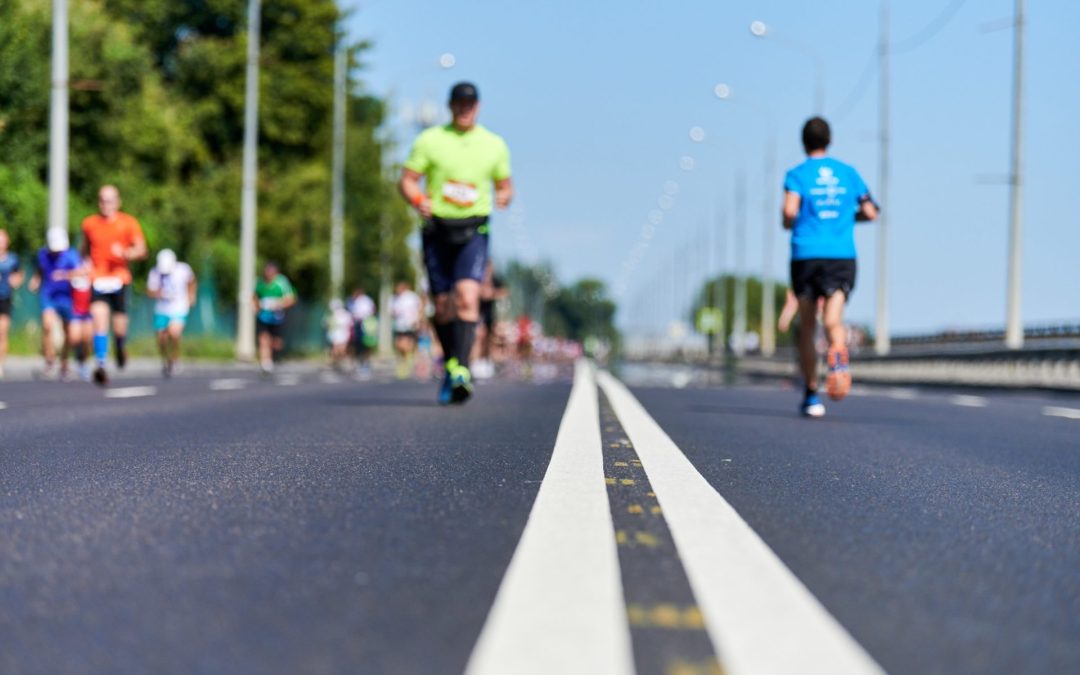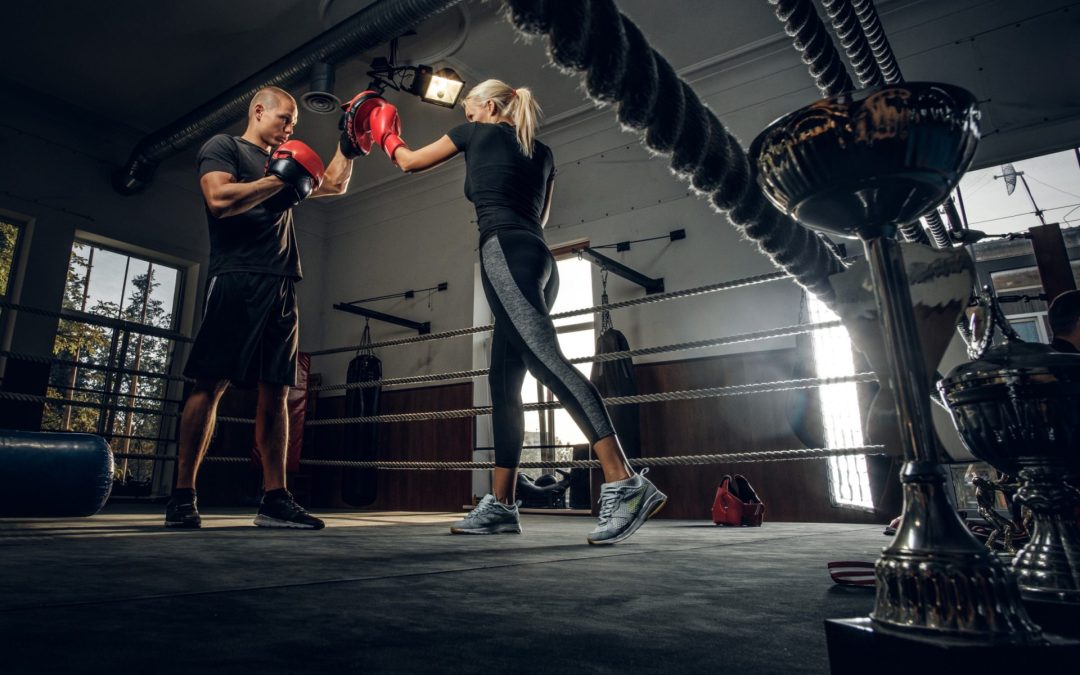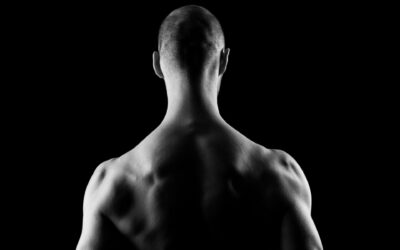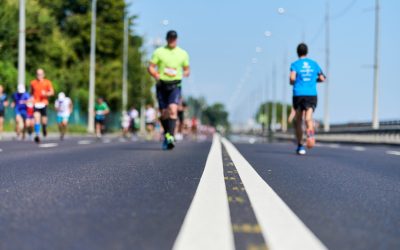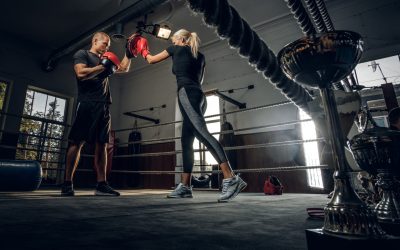When we think of building muscle, the first things that usually come to mind are weightlifting and bodybuilding. However, in recent years, Pilates has gained popularity as a form of exercise that not only improves flexibility and balance but also claims to build muscle. But does it? Let’s take a closer look at if Pilates builds muscle and its effects on muscle building as whole.
Let’s First Start With the Basics – What is Pilates and How do You Build Muscle?
Pilates is a low-impact form of exercise that focuses on strengthening the core muscles, improving posture, and increasing flexibility. It was developed by Joseph Pilates in the early 20th century and has gained popularity as a fitness routine in recent years.
To build muscle, our body needs two things – resistance and progressive overload. Resistance can come from weights or our body weight, while progressive overload means gradually increasing the intensity of our workouts to challenge our muscles.
So how does Pilates fit into this?
Pilates uses both resistance and progressive overload to strengthen muscles. The exercises involve controlled movements using your body weight, as well as resistance from equipment such as the reformer or Pilates ring. As you progress in your practice, you can increase the intensity of your workouts by adding more repetitions or using heavier resistance.
Now for the Big Question: Can Pilates Build Muscle?
The short answer is yes, Pilates can build muscle. However, the type of muscles that are built may differ from traditional weightlifting. Pilates focuses on slow and controlled movements, which target smaller and deeper muscles in our body.
Traditional weightlifting often targets larger muscle groups, such as the biceps or quadriceps, resulting in a more noticeable increase in muscle mass. On the other hand, Pilates works on stabilizing muscles, improving overall strength and endurance rather than focusing on increasing the size of specific muscles.
If You Want to Build Muscle Using Pilates – Try Doing This
To effectively build muscle through Pilates, it is essential to incorporate resistance and challenge into your workouts. This can be achieved by using props such as resistance bands, balls, or weights.
Furthermore, focusing on proper form and alignment is crucial in Pilates to activate the correct muscles and prevent injury. By maintaining proper alignment and engaging the core throughout each movement, you can intensify the workout and target specific muscle groups more effectively.
Best Pilates Reformers for Home
1. AeroPilates Foldable Reformer Machine 4420
2. JOYRIDER Folding Pilates Reformer Machine
3. Sean Lee Core Foldable Pilates Reformer Machine
Sample Pilates Muscle-Building Workout Plan:
There is a plethora of different exercises you can do, below is just a sample Pilates muscle-building workout
Warm-up:
Perform 5-10 minutes of light cardio (e.g., brisk walking or jumping jacks) to increase blood flow and warm up your muscles.
Full Body Pilates Routine:
Exercise 1: Pilates Roll-Up
Lie on your back, arms overhead. Inhale, then exhale, rolling up to a seated position.
Focus on engaging your core throughout the movement. Repeat 10-15 times.
Exercise 2: Pilates Push-Ups
- Start in a plank position with hands under shoulders.
- Lower your body halfway, keeping elbows close to your body. Push back up.
- Aim for 3 sets of 10-15 reps.
Exercise 3: Pilates Hundreds
- Lie on your back, legs lifted. Pump your arms up and down while inhaling for 5 counts and exhaling for 5 counts.
- Repeat for a total of 100 arm pumps.
Exercise 4: Pilates Leg Circles
- Lie on your back, lift one leg towards the ceiling. Circle the leg in both directions.
- Switch legs and repeat. Aim for 2 sets of 10 circles per leg.
Targeted Muscle Building:
Exercise 1: Pilates Bridge
- Lie on your back, lift your hips towards the ceiling, engaging your glutes.
- Lower and lift for 15-20 reps. Repeat for 3 sets.
Exercise 2: Pilates Side Leg Lifts
- Lie on your side, lift the top leg up and down.
- Aim for 3 sets of 15-20 reps on each side.
Exercise 3: Pilates Plank Variations
- Perform plank variations, such as side plank or plank with leg lifts.
- Hold each variation for 30 seconds to 1 minute. Repeat for 3 sets.
Cool Down:
- Perform gentle stretching exercises for each major muscle group.
Remember to listen to your body and modify exercises as needed. Consistency and progressive overload are key to building muscle, so gradually increase the intensity and challenge of your workouts over time. Adjust the repetitions and sets based on your fitness level and goals.
Diet is a Big Part of Whether or Not You Will Build Muscle
No matter what form of exercise you choose, diet plays a significant role in building muscle. Pilates alone may not be enough to see significant muscle growth if your diet is lacking in protein and other essential nutrients.
Protein is the building block of muscles, and it is crucial to consume enough protein for muscle repair and growth. Consuming protein after resistance training is proven to increase muscle mass significantly more than just carbohydrate intake.
Therefore, incorporating a balanced diet with adequate protein intake into your routine can complement Pilates workouts and aid in building lean muscles.
Sample Diet for Muscle Building with Pilates:
Will Pilates build muscle or not, as we mentioned above, will heavily depend on your diet; more specifically, your protein intake. Below is a sample daily menu if you’re looking to build muscle from Pilates.
- Breakfast:
- Scrambled eggs with spinach and tomatoes
- Whole-grain toast
- Greek yogurt with berries
- Mid-Morning Snack:
- Handful of almonds or walnuts
- Apple or banana
- Lunch:
- Grilled chicken breast or tofu
- Quinoa or brown rice
- Steamed vegetables (broccoli, carrots, bell peppers)
- Afternoon Snack:
- Cottage cheese with pineapple
- Whole-grain crackers
- Pre-Pilates Workout Snack (if applicable):
- Greek yogurt with a teaspoon of honey
- Small serving of granola
- Post-Pilates Workout Meal:
- Protein smoothie with whey or plant-based protein, banana, and almond milk
- Whole-grain toast with nut butter
- Dinner:
- Baked salmon or lentils for a vegetarian option
- Sweet potato or quinoa
- Mixed salad with leafy greens, cherry tomatoes, and avocado
It All Comes Down to Muscular Hypertrophy
Muscular hypertrophy is the process of increasing muscle size, and it occurs when muscles are repeatedly challenged. This challenge can come from lifting weights or resistance training.
Pilates primarily uses body weight as resistance, which may not be enough to cause significant muscular hypertrophy in experienced weightlifters. However, for beginners or those looking to improve their overall fitness levels, Pilates can provide a great starting point. As long as you are working out your muscles to the point of fatigue and your muscle fibers are tearing, only to repair again, then your muscles will gradually increase is size and strength.
Different Types of Pilates Can Affect Things
There are different types of Pilates, and each one can have a varying effect on muscle building. For example, mat Pilates focuses on using bodyweight exercises to strengthen the core muscles, while reformer Pilates uses specialized equipment that provides resistance for a full-body workout.
Mat Pilates may not result in significant muscle growth compared to weightlifting, but it can improve functional strength and stability. But does a Pilates reformer build muscle? Reformer Pilates can provide resistance similar to weightlifting and potentially lead to more noticeable muscle growth. The best type for building muscle, however, is probably Power Pilates; it combines strength training and cardio to create a tough, challenging workout.
Variations of Pilates
Classical Pilates:
This is the original method developed by Joseph Pilates. It follows a specific sequence of exercises on the mat and various apparatus, including the Reformer, Cadillac, and Wunda Chair.
Contemporary Pilates:
Contemporary Pilates incorporates modern principles while still respecting the fundamentals of the classical method. It often includes more variations and modifications to adapt to individual needs.
Stott Pilates:
Stott Pilates is a contemporary approach that places a strong emphasis on breath, core stability, and pelvic alignment. It often uses specialized equipment, including the Stott Pilates Reformer.
Winsor Pilates:
Created by Mari Winsor, Winsor Pilates gained popularity through a series of workout videos. It focuses on strengthening the core, toning muscles, and improving flexibility.
Power Pilates:
Power Pilates is a more intense and fast-paced version of traditional Pilates. It incorporates elements of strength training and cardiovascular exercise to provide a challenging workout.
Fusion Pilates:
Fusion Pilates combines Pilates with elements from other fitness disciplines such as yoga, dance, or resistance training. This type aims to offer a well-rounded and diverse workout.
Clinical Pilates:
Clinical Pilates is often used in rehabilitation settings. It involves tailored exercises designed to address specific injuries or conditions under the guidance of a healthcare professional.
Mat Pilates:
Mat Pilates focuses on exercises performed on a mat without the use of specialized equipment. It is a foundational form of Pilates that can be done anywhere.
Reformer Pilates:
Reformer Pilates involves the use of a specialized machine called the Reformer, which consists of a sliding carriage and various springs. It provides resistance to exercises and allows for a wide range of movements.
Pilates Barre:
Combining Pilates with elements of barre workouts, this type incorporates small isometric movements to target specific muscle groups, often using a ballet barre for support.
Will Pilates Build Muscle if You Are in a Calorie Deficit?
One common misconception is that Pilates doesn’t build muscle because it is not a high-intensity workout. However, muscle building primarily depends on the body’s energy balance, rather than the intensity of the exercise. This means that as long as you are in a calorie surplus (consuming more calories than you burn) and exercising your muscle fibers effectively, your muscles can grow even with lower-intensity exercises like Pilates.
On the other hand, if you are in a calorie deficit (burning more calories than you consume), it may be challenging to build significant muscle mass regardless of the type of exercise, including Pilates. This is because the body prioritizes using energy for essential functions rather than building muscle.
Is There a Difference Between Building Muscle and Toning Muscle?
Another point of confusion is the difference between building muscle and toning muscle. Building muscle typically refers to increasing the size and strength of muscles, while toning refers to making them appear more defined by reducing body fat percentage.
Pilates can contribute to both building and toning muscles if done correctly. It focuses on strengthening the core, which includes not only abdominal muscles but also back, hips, and glutes. These exercises involve using one’s body weight as resistance, rather than external weights, which can still build muscle mass over time. So, if you were wondering does Pilates build glutes, it certainly does!
Are You Still Getting Stronger Even if Your Muscles Are Not Getting Bigger?
The size of the muscle does not always equate to strength. Pilates targets smaller, deeper muscles that are often neglected in traditional weightlifting exercises. These muscles play a crucial role in stability and posture and can significantly improve overall strength.
Moreover, Pilates also incorporates eccentric contractions, which involve lengthening the muscles while under tension. This type of contraction is essential for building strength and muscular endurance.
Pilates Coupled With Weightlifting for the Win!
Pilates and weightlifting may seem like two different worlds, but they can actually complement each other nicely. Weightlifting focuses on building larger muscles, while Pilates targets the smaller ones. By incorporating both forms of exercise into your routine, you can achieve a more balanced and well-rounded physique.
Additionally, Pilates can help improve form and technique in weightlifting exercises by strengthening the stabilizing muscles. This not only reduces the risk of injury but also allows for better muscle activation during lifting sessions.
Zoppler is reader supported and may earn affiliate commissions from links on this page. We support and believe in all the products and services we promote and are affiliated with.

